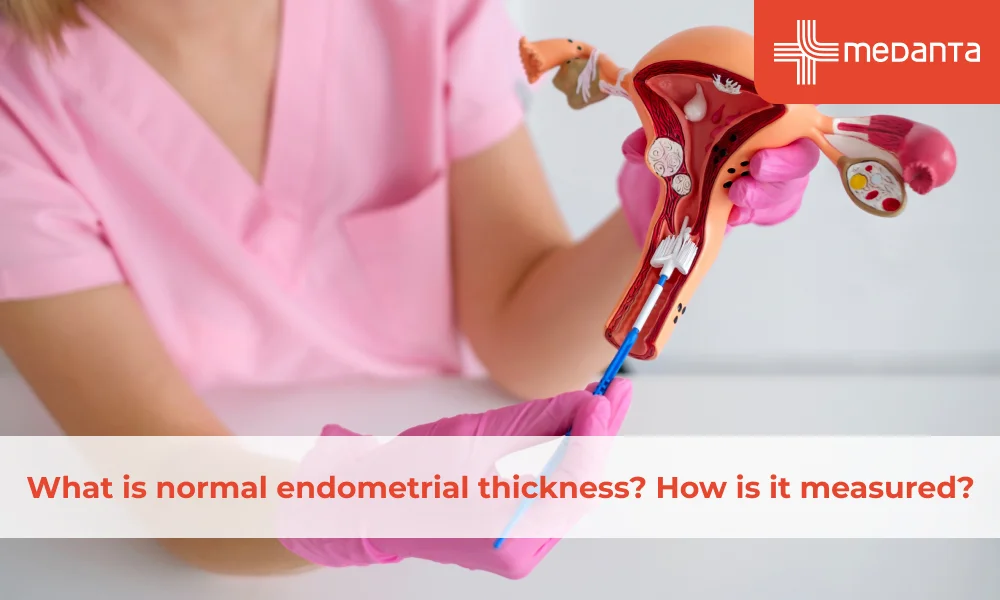What is normal endometrial thickness? How is it measured?

TABLE OF CONTENTS
Each menstrual cycle, the body prepares the endometrium by adjusting levels of estrogen, and progesterone to be ready to host an embryo. Endometrial thickness increases and decreases during the process.
We will discuss what is normal endometrial thickness, how it is measured and what an abnormal value may indicate.
The normal thickness of the endometrium
There is no one value that defines the normal thickness of the endometrium. This is because the normal thickness of your endometrium changes throughout your life. From childhood to sexual maturity, during every menstrual cycle and then after menopause.
Menstrual cycle-based changes:
In females who have attained sexual maturity, the thinnest value occurs during menstruation and this is usually 2-4 mm in thickness. Before adolescence, the endometrium is thinner.
The first part of your menstrual cycle is called the proliferative phase, which lasts between the 6th and the 14th day of the cycle. This is when the endometrium starts to thicken and then the value is usually between 5-7 mm.
As the cycle continues, the endometrium grows thicker up to 11 mm before ovulation and up to 16mm during ovulation time. This will be the thickest.
Pregnancy:
Doctors look for optimum thickness as a sign of better chances of a full-term pregnancy - neither too thick nor too thin in pregnancy so that the embryo can have successful implantation and continues to receive the nutrition it needs
Menopause:
After menopause, the endometrium usually measures 5mm or lesser in healthy individuals.
How to measure endometrial thickness?
Ultrasound is the easiest and most common method to take measurements. When ultrasound is not suitable due to the position of the uterus etc., doctors may use MRI to determine the endometrial thickness.
What causes endometrial thickness to change?
Apart from the normal changes that happen during different stages of life, the following may also cause either a thickening or a thinning of the endometrial lining.
What can cause thickening?
Pregnancy
Unopposed estrogen in conditions like PCOD
Hormone Replacement Therapy
Tamoxifen intake
Chronic High B.P
Presence of endometrial Polyps
Benign Diabetic
Scar tissue
Endometrial Hyperplasia
Ovarian cancer
What can cause thinning?
Medical Treatment
Structural differences
Conclusion
Endometrial thickness throws light at not only the condition of the uterus, the favorability for conception and the health of the pregnancy, but it also shows hormonal changes, points to other disease conditions and is an important indicator in various assessments of a woman’s reproductive health.






